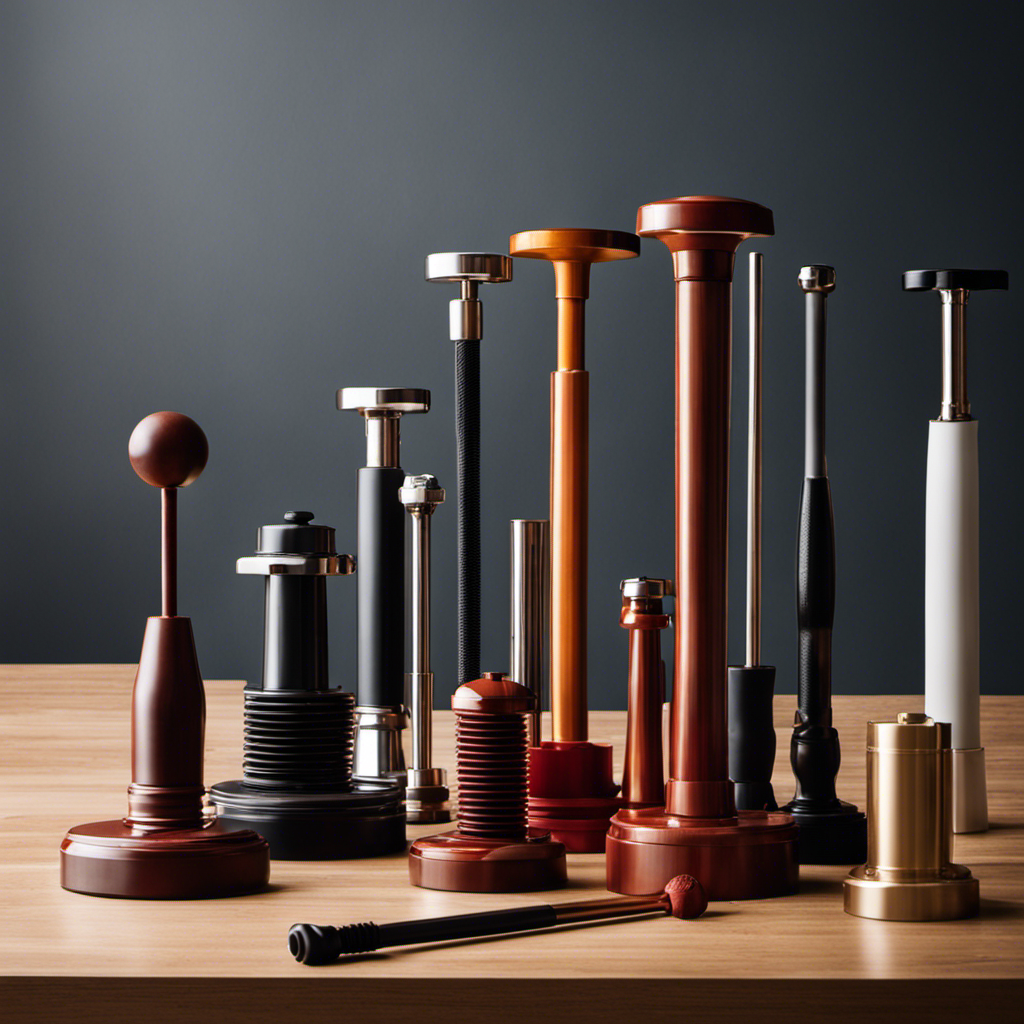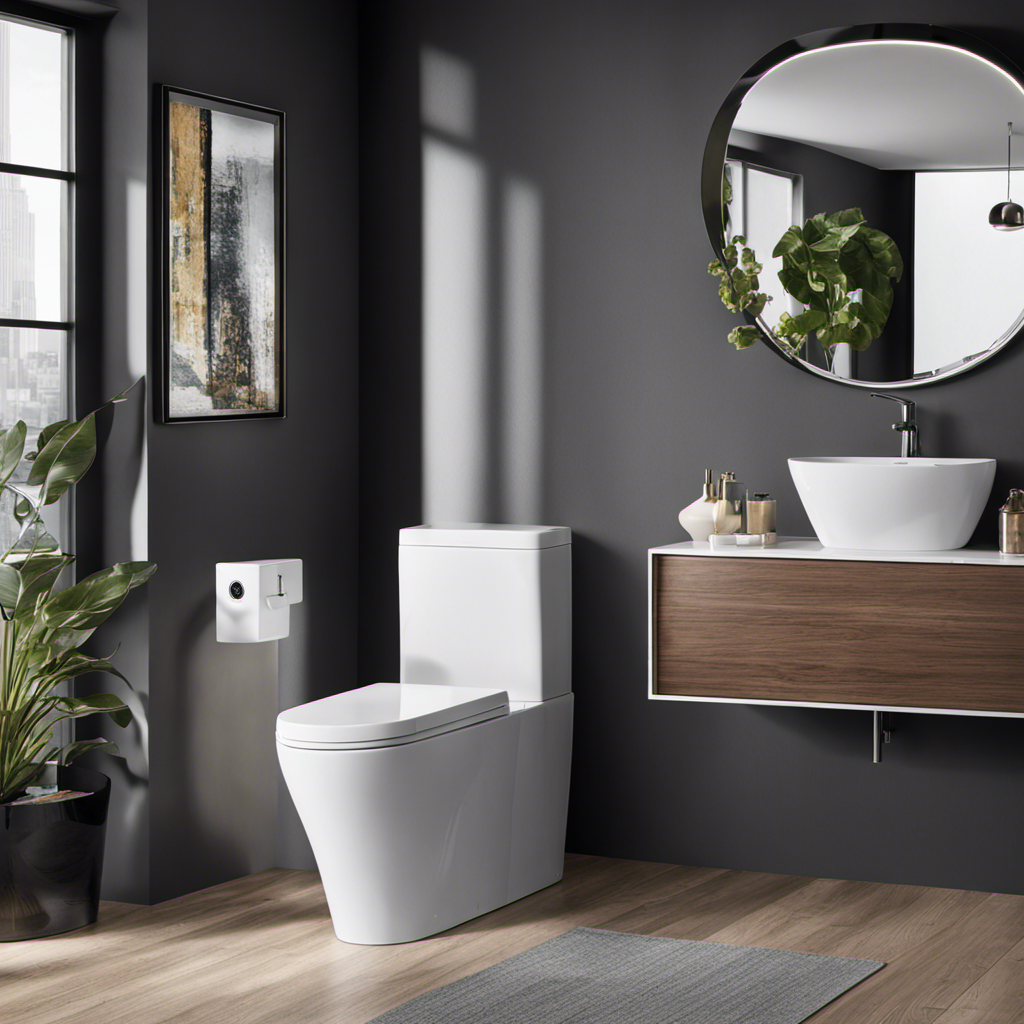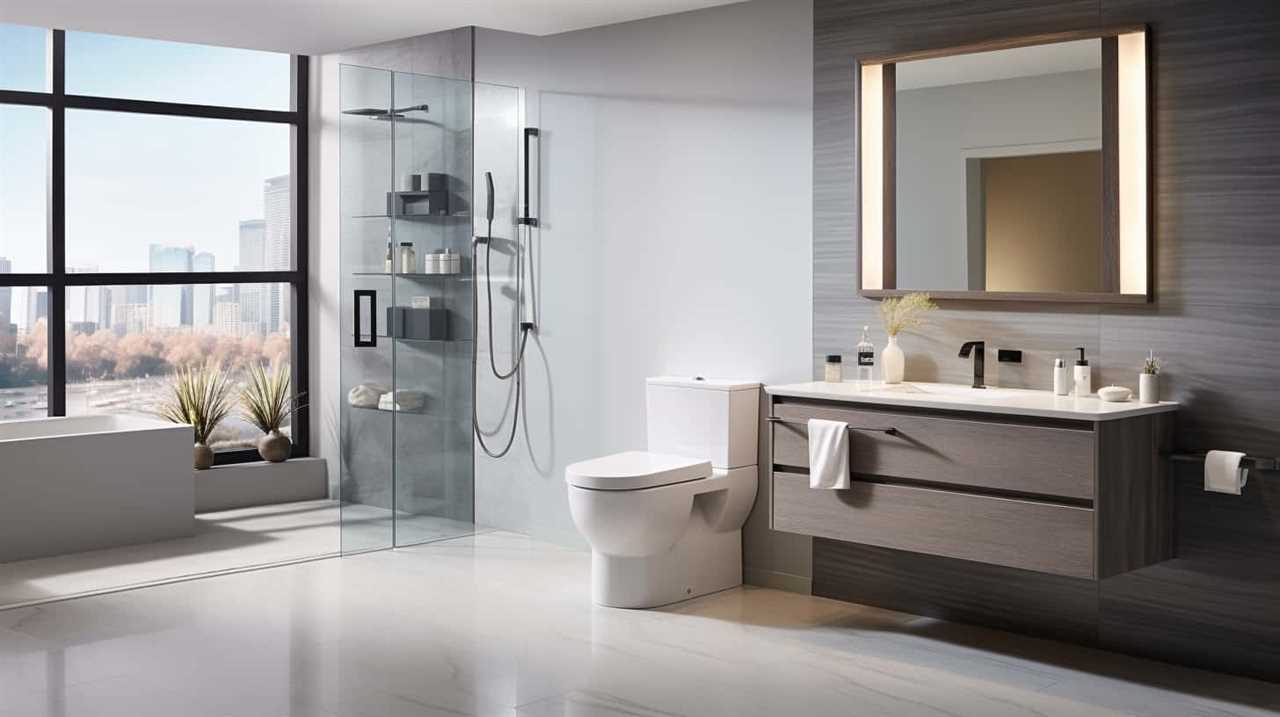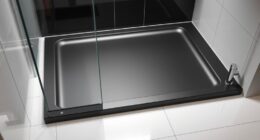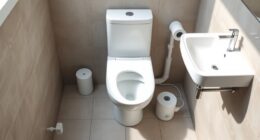As a homeowner, I’ve faced my fair share of clogged drains and toilets. It can be a frustrating experience, but with the right plunger, things can go from clogged to clear in no time.
In this article, I’ll be sharing my knowledge on the different types of plungers and how to choose the right one for unclogging. From the sink/cup plunger to the toilet/flange plunger and the powerful accordion plunger, I’ll guide you through the selection process and provide step-by-step instructions for effective plunging.
Get ready to tackle those clogs head-on!
Key Takeaways
- Sink/Cup Plunger is specifically designed for unclogging sinks, showers, baths, and basins.
- Toilet/Flange Plunger is specifically designed for toilets and creates a tight seal around the toilet drain.
- Accordion Plunger is made of rigid plastic and is ideal for unclogging stubborn toilet blockages.
- Taze Plunger is suitable for narrow drains like shower drains and provides effective suction for unclogging.
Sink/Cup Plunger
I always use a sink/cup plunger when I need to unclog my shower, bath, sink, or basin because it works well on flat surfaces and creates positive and negative pressure to loosen the waste.
The sink/cup plunger is specifically designed for these types of fixtures and is highly effective in unclogging them. Its unique design allows for the alternating pressure to jostle the clog back and forth, gradually loosening the waste. By creating positive and negative pressure, this plunger is able to dislodge even the most stubborn clogs.
When using the sink/cup plunger, it is important to position it correctly over the drain and apply firm, even pressure while plunging. This technique, coupled with the plunger’s design, ensures a successful unclogging experience.
Toilet/Flange Plungers
Toilet/Flange plungers are specifically designed for toilets and have a flexible rubber base called a flange. This unique toilet flange design provides several advantages over other types of plungers.
Advantages of Toilet/Flange Plungers:
-
Enhanced Seal: The flange on the plunger creates a tight seal around the toilet drain, preventing air from coming through and ensuring a secure suction. This seal is crucial for effective plunging and unclogging.
-
Easy Fit: The shape of the flange allows the plunger to fit neatly into the toilet drain, ensuring proper coverage and maximum force application. This makes it easier to target the clog and exert the necessary pressure for unclogging.
-
Versatility: While designed specifically for toilets, toilet/flange plungers can also be used in other areas with similar drain structures. This versatility makes them a practical tool to have for any household.
With their specialized design and advantages, toilet/flange plungers are an essential tool for tackling toilet clogs effectively.
Accordion Plungers
Using an accordion plunger requires caution to avoid scratching the toilet, as it is made of rigid plastic. Despite its difficulty in use, accordion plungers have several benefits. They are more powerful than other plungers, allowing for effective unclogging of stubborn toilet blockages. The accordion design creates a tight seal, preventing air from escaping and maximizing suction. This makes it an ideal choice for toilets with complex clogs.
However, if you prefer alternatives to the accordion plunger, there are other options available. Sink/cup plungers can work on flat surfaces and are suitable for showers, baths, sinks, and basins. Toilet/flange plungers are specifically designed for toilets, with a flexible rubber base that fits neatly into the drain.
Each type of plunger has its own advantages and considerations, so choose the right tool based on your specific needs.
How to Plunge a Toilet
Positioning is a crucial step when plunging a toilet. To effectively clear a clog, follow these steps:
-
Locate the clog: Before plunging, identify the location of the clog in the toilet bowl. This will help you focus your efforts and ensure proper positioning of the plunger.
-
Position the plunger: Place the plunger over the drain hole in the toilet bowl, ensuring a tight seal. The plunger’s flange should fit snugly around the drain to create suction.
-
Apply downward force: Push the plunger down firmly, using your body weight to generate pressure. Then, quickly pull up to create suction and dislodge the clog. Repeat this motion several times until the water starts to drain.
Preparation
Before I begin plunging, I gather all the necessary materials and ensure the toilet is ready for the unclogging process. However, sometimes a traditional plunger may not be readily available. In such cases, there are alternative methods to consider.
One option is using a toilet auger, which is a long, flexible tool designed to reach and remove clogs deeper within the toilet drain. Another alternative is a drain snake, which can be inserted into the toilet drain to break up and remove stubborn clogs.
Additionally, it’s important to take preventive measures to avoid clogs in the first place. This includes being mindful of what you flush down the toilet, such as avoiding excessive toilet paper or flushing non-flushable items. Regular maintenance, such as periodic cleaning and using enzyme-based drain cleaners, can also help prevent clogs from occurring.
Positioning
I find that the key to successful plunging is ensuring a tight seal between the plunger and the toilet drain. Proper technique and avoiding common mistakes are crucial to effectively unclogging a toilet.
Here are three important factors to consider when positioning the plunger:
-
Position the plunger correctly: Place the plunger directly over the drain hole, ensuring that it covers the entire area. The plunger should be centered and create a complete seal to maximize suction.
-
Apply downward pressure: Use your body weight to push the plunger down firmly. This will create a strong force to dislodge the clog. Make sure to maintain the seal throughout the plunging process.
-
Use controlled, rhythmic motions: Move the plunger up and down in a steady and controlled manner. Avoid fast or erratic movements, as they can break the seal and reduce the effectiveness of plunging.
Frequently Asked Questions
Can a Sink/Cup Plunger Be Used on a Toilet?
Yes, a sink/cup plunger can be used on a toilet. However, it may not be as effective as a toilet/flange plunger due to the design differences. It’s important to use the right plunger for different types of clogs.
Are There Any Alternative Methods to Using a Plunger to Unclog a Toilet?
I’m not an expert, but as far as I know, using a toilet auger can be an alternative to using a plunger for unclogging a toilet. It’s a tool specifically designed for this purpose.
How Do Accordion Plungers Compare in Effectiveness to Sink/Cup Plungers and Toilet/Flange Plungers?
Accordion plungers are more powerful than sink/cup and toilet/flange plungers. They are made of rigid plastic and create a strong suction by preventing air from passing in and out of the cup. However, caution is needed to avoid scratching the toilet.
What Should I Do if the Plunging Method Doesn’t Work in Unclogging My Toilet?
If the plunging method doesn’t work in unclogging my toilet, there are alternative methods to try. One option is using a toilet auger, but be sure to follow safety precautions to avoid further damage.
Are There Any Safety Precautions or Tips to Keep in Mind When Using a Plunger to Unclog a Toilet?
When using a plunger to unclog a toilet, it’s important to follow safety precautions and best practices. Ensure proper positioning, maintain a firm grip, and use controlled force to avoid splashing or damaging the toilet.
Conclusion
In conclusion, when it comes to unclogging, choosing the right plunger is crucial. Just like a surgeon selects the perfect instrument for a delicate operation, we must select the perfect tool for our plumbing needs.
Whether it’s the sink/cup plunger, the toilet/flange plunger, or the accordion plunger, each one has its own unique features and benefits.
So, next time you find yourself in a plumbing predicament, remember to prepare, position, and perform with precision. With the right plunger in hand, you’ll be able to conquer any clog with ease.
Happy plunging!
